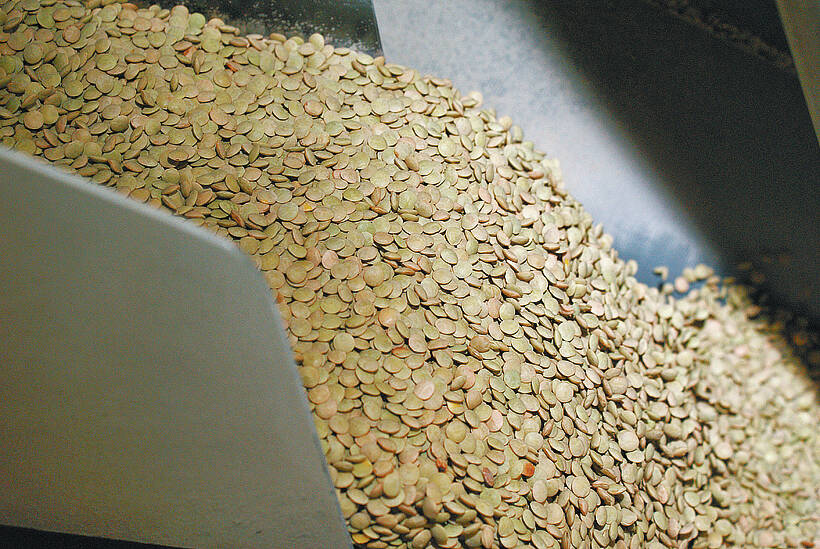Too many hogs, still
Lower wholesale prices for some pork cuts led American packers to pay even less for hogs last week. Prices plunged to $13 (U.S.) per hundredweight (live) in some areas, but were $15 per cwt. in Omaha, Nebraska, at week’s end.
Manitoba Agriculture said hog marketings are still in excess of slaughter capacity and, with declining wholesale pork prices, packers had no incentive to bid higher for hogs.
Winter storms could disrupt marketings and force packers to increase prices temporarily, but it is unlikely prices will rise much until weekly slaughter drops below plant capacity in January.
Read Also

Green lentil market oversupplied
Farmers in Western Canada can expect price pressure on their new crop of green lentils, as the available supplies among the world’s major lentil-growing nations increase significantly.
Although United States sow slaughter in late November was 18 percent above year-earlier levels, the increase in gilt slaughter is unknown so the extent of breeding female slaughter can only be estimated.
Hog futures prices, particularly for the next few months, dropped sharply in response to the lower cash bids.
The trade is waiting for the results of USDA’s hog report due for release at the end of the month. If breeding herd liquidation is greater than expected, prices might increase sharply in the new year.
Manitoba Index 100 hog prices (including premiums) fell from $69.61 per 100 kilograms on Dec. 4 to $63.48 per ckg on Dec. 9, but recovered slightly the next day.
Although prairie hog prices are by far the lowest since 1971 and are at all-time lows if inflation is factored in, Manitoba Agriculture says the hog-barley ratio this fall is not much lower than in the fall of 1983, 1988 and 1996 and the spring of 1981 and 1984, which were periods of stronger hog prices but also higher feed costs.
Cattle prices drop
The depressed hog market and lower wholesale beef prices caused fed cattle prices to fall last week, dropping $3 per cwt. on average compared to the previous week. Canfax said almost all cattle were shorter fed types (100 days or less.)
Trade to the U.S. remained limited.
Alberta sales Dec. 10 saw steers at $85-$87, flat rail $145.85-$146.85 and heifers $84.60.
Wholesale beef prices felt the pressure of ample supplies of cheap pork.
The local Calgary market is down $3 per cwt. for this week in a range of $147-$155 with limited trade to $169 on handyweight steers, said Canfax. Only limited beef sales can be expected for the rest of the month but some New Year’s business is now occurring.
Byproduct values are creeping up.
Canfax said slaughter last week dropped to 56,000 head. The last time it was that small was during the Thanksgiving holiday week in October. It seems packers are reducing kills because they can’t move the beef.
More pressure on the U.S. beef market is expected as a result of the disastrous pork situation. This, coupled with larger supplies of market-ready cattle, should force fed cattle prices lower.
The slaughter cow market was mostly steady last week. A few top quality, grain-fed cows brought premium prices. Prices were similar to a year ago and the outlook is steady.
Feeder cattle prices traded steady to strong. Volumes started to decline as the festive season approaches.
The pressure on the futures market showed up in some sales late in the week with yearlings trading under some pressure.
Volume was unchanged from last week. Prices are generally $4-$8 per cwt. higher on calves compared to last year, while yearlings are about $1-$2 higher than 1997.
Canfax said the volume on offer will decline this week in preparation for holiday disruptions. Prices are expected to be steady to lower as pressure from the fed cattle and the pork situation influences sales.
Bred cows had a price range of $500-$1,400. Most good quality cows traded from $1,000-$1,250, with medium types from $750-$1,000. Bred heifers ranged from $560-$1,450. Most good quality heifer quotes were from $700-$1,300, with medium types from $700-$1,100. Cow-calf pairs ranged from $700-$1,185.














